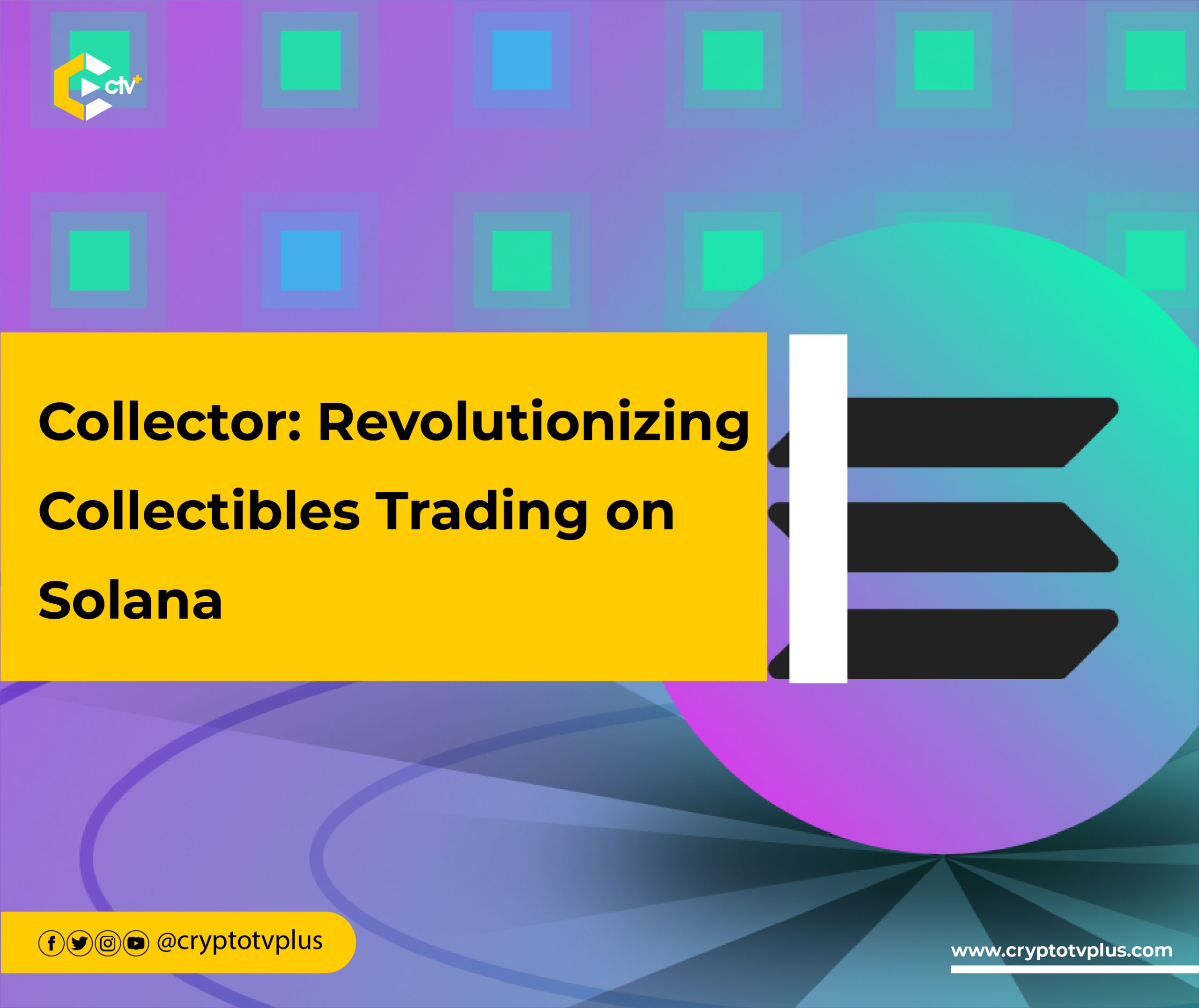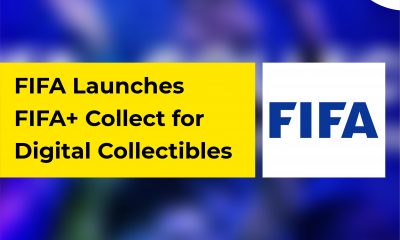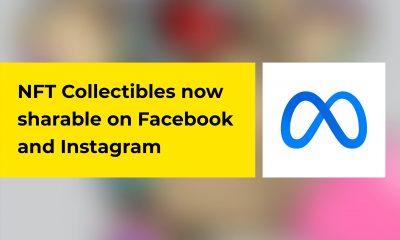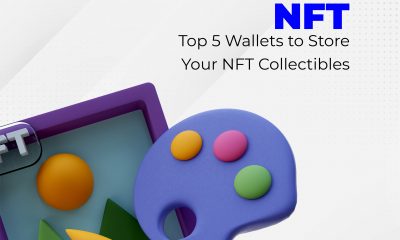FEATURED
Collector: Revolutionizing Collectibles Trading on Solana

Collecting physical items has been a popular pastime for centuries, with hobbies ranging from trading cards and coins to comics and stamps. However, the process of buying, selling, and trading these prized possessions can be cumbersome, expensive, and risky especially as they are not easily accessible to other people across the globe. That’s where Collector comes in, a platform developed on the Solana blockchain that revolutionizes how people trade physical collectibles online.
Pros
Collector offers collectors a fast, safe, and cheap way to trade their physical collectibles by providing a physical-to-digital bridge. To get started, collectors simply send their physical collectibles to Collector to be insured and stored within a secured partner vault. In exchange, Collector issues a digital token representing legal ownership of the collectible, which can be freely traded and used throughout the decentralized web. This eliminates the need for physical transportation from buyer to seller, reducing the associated risks of transportation and fraud.
The platform is underpinned by a physical-to-digital bridge whereby each physical collectible submitted to the platform is identified by a non-fungible token (NFT). The provable scarcity of the NFT allows for a unique correspondence, and thus, each physically backed NFT (pNFT) can be used to carry the license of ownership for the associated physical collectible. This system allows for easy tracking of ownership and provides security for both buyers and sellers.
Collector provides its own ultra-low-fee marketplace, allowing collectors to easily trade their collectibles with others on the platform. Additionally, pNFTs can be openly exchanged like any other NFT on various marketplaces. Regardless of where the pNFT goes, whoever holds it can redeem it at any time to have the underlying physical collectible shipped directly to them, worldwide.
With digital representations of their physical collectibles, collectors can leverage these prized assets in exciting new ways, both on Collector and throughout the decentralized web. For example, Collector’s two-year roadmap includes custom pNFT display galleries that offer a unique way to share your collection with friends, fans, and foes alike, as well as a lending platform where collectible owners can collateralize their pNFTs for loans. This allows collectors to unlock financial liquidity without needing to sell their collectibles and incur capital gains taxes.
Furthermore, decentralized finance (DeFi) lending solutions will be critical in unlocking financial liquidity for collectors and investors alike. By leveraging DeFi lending solutions, collectors and investors will find faster, cheaper, and more efficient loans than they would through traditional means.
Challenges in the market
Collecting rare and unique items can be an exciting and fulfilling hobby, but it also comes with its own set of challenges. In particular, the market for collectibles is plagued by several issues that can make buying and selling items a frustrating and costly experience.
Fees
One of the biggest challenges facing collectors and sellers is the high fees associated with online marketplaces. Popular sites like eBay charge sellers a fee of 12.9% of the sale price of their collectible, up to $7,500, and then an additional 2.35% on the portion of the sale over $7,500. For a seller with a million-dollar card, this can add up to a staggering $25,000 in fees. Even for those selling items worth only a few hundred dollars, the fees can be a significant burden.
Auction houses are another source of high fees in the collectibles market. These companies often charge a percentage of the sale price to both the buyer and the seller, which can add up to hundreds of thousands of dollars for a high-value item. These fees can slow down the pace of trading in the collectibles market, as each new owner must hold the item for an average of 1-2 years just to break even on the seller’s fees.
Process of shipping physical items
Another challenge facing collectors and sellers is the process of shipping physical items. Online marketplaces typically require sellers to physically transfer the item to the buyer, which can be a time-consuming and risky process. There is always a risk of the item getting lost in the mail or stuck in customs, which can cause delays and additional fees. Counterfeit items are also a concern, as buyers may receive an item that is not as described or even a fake.
Catch-all marketplaces versus niche marketplaces
Catch-all marketplaces like eBay allow sellers to list items from a wide variety of categories, but this can lead to irrelevant search results and make it difficult for buyers to find what they’re looking for. Niche marketplaces, on the other hand, specialize in specific categories of items, but they may lack the volume and liquidity necessary to fully service their users.
Ultimately, these problems in the collectibles market can make buying and selling items a frustrating and costly experience. However, there are steps that collectors and sellers can take to mitigate these issues. For example, working with a reputable dealer or auction house can help ensure that fees are reasonable and the transaction is conducted safely and efficiently. Niche marketplaces can also be a good option for collectors looking for specific items, as long as they are prepared to deal with the limitations of these smaller marketplaces. By being aware of these challenges and taking steps to address them, collectors and sellers can continue to enjoy their hobby while minimizing the costs and risks involved.
How Collector Works
Getting started with Collector is easy. To begin with,
- Collectors can register their intention to ship collectibles on the Collector website and fill out a few details about the items they wish to digitize.
- They can then print a shipping label and pack their collectibles, which they hand off to a delivery service.
- Collector will cross-reference the delivery with the tracking number provided, validate the received item(s), and place them in one of its trusted partner vaults.
Each unique pNFT (physical non-fungible token) is minted on the Solana blockchain to represent full legal ownership of the associated collectible. The pNFT and the collectible remain linked until the pNFT is redeemed (and burned) for the underlying asset. It does not matter whether the pNFT was gifted, inherited, purchased from a third party, or purchased from the official Collector marketplace; it is linked to the collectible until it is redeemed to retrieve the physical collectible from the vault.
Four Key aspects of Collector
- Secure Vaults
Collector take the responsibility of custodying collectors’ assets seriously, treating their collections with the respect they deserve. Collector claims that the platform’s vaulting partners have decades of card-specific expertise and control for ideal storage temperature, humidity, and light exposure. Every collectible in the Collector system is fully covered by comprehensive insurance. The platform requires each vaulting partner to be experienced in the types of collectibles being stored. Collector will not use any vault unless it meets all of these qualifications.
At no point does Collector have any claim over collectors’ collectibles. The platform is simply a utility conduit between collectors and world-renowned vaults. These are institutions that have built their reputations on trustworthiness, reliability, and security. Whether a collector submits a physical collectible into the Collector system themselves or purchases a pNFT from someone else, they will always know precisely where their collectible is vaulted.
- Blockchain Technology
Collector leverages blockchain technology to provide distinct advantages over slow-moving e-commerce incumbents. The platform’s smart contracts, pNFTs, and native token offer improved transactability, increased liquidity, and unmatched security. By using blockchain, Collector ensures that collectors’ assets are secure and transparency stored and tracked.
- Fractional Ownership
Collector enables collectors to own a fraction of a collectible, which enables them to purchase more valuable items without breaking the bank. By dividing a collectible into pNFTs, collectors can trade fractions of a collectible instead of the entire asset. This feature opens up opportunities for collectors who want to diversify their collections while reducing risk.
- Marketplace
Collector also has an official marketplace that allows collectors to buy, and sell their collectibles. The marketplace provides an opportunity for collectors to explore new collections, connect with like-minded individuals, and discover new opportunities for their collections.
$COLL Token Utility
$COLL, collector’s native token is a tool that opens up new opportunities and advantages within the Collector platform. Every transaction, trade, and deposit on Collector earns $COLL, ensuring that users are incentivized.
So, what exactly can you do with $COLL on Collector? Let’s take a closer look at some of its key use cases.
- Firstly, $COLL can be used to reduce transaction fees during the sale and auction process. For high-value sales, transaction fees can be as high as 0.5%, but by executing these transactions with $COLL tokens, users can significantly reduce these fees. This makes it easier and more cost-effective to buy and sell collectibles on the platform, ultimately benefiting all users.
- Additionally, users who want to increase the visibility of their sales or auction postings can spend $COLL to do just that. By using $COLL tokens, users can access premium features such as top-of-search listings, highlighted banners, and mentions in Discord feeds. This means that their listings are more likely to be seen by potential buyers, increasing the chances of a successful sale.
- For influencers and collectors who want to show off their collections in style, $COLL can also be used to upgrade and customize gallery views. By spending $COLL tokens, users can make their collections pop on social media, allowing followers to visualize their prized collectibles uniquely and engagingly. This is a great way to showcase your collection and build your personal brand within the community.
But that’s not all – $COLL also grants users governance rights, meaning that they have a say in how the platform is run and developed. This gives users a greater sense of ownership and involvement in the platform, further strengthening the Collector community.
The Brain Boxes behind Collector
The team behind Collector consists of Tuom Holmberg as CEO, Dax Herrera as CTO, Micky Irons as CMO, and Richard Shafer as Sr. Software Engineer. They are supported by a team of advisors that includes Orion Depp, Jon Radoff, Adam Preston, Neel Master, John Kraski, Timothy McSweeney, Charles Adkins, and Jeff Nowak.
As collectors themselves, the team understands the issues that plague collectors in the modern era. They have seen the transition of physical collectibles into the digital world and the benefits and drawbacks that come with them. By using blockchain technology, they see an opportunity to bring the benefits of the online world to collecting without the downsides.
Closing thoughts
Overall, the Collector platform has the potential to transform the world of collecting by bringing it into the digital age while also preserving the authenticity and value of physical collectibles. With an experienced team and a strong focus on blockchain technology, Collector wants to become a leading platform for collectors around the world.
Read also;
Binance launches support for South African rand bank deposits



















Pingback: Collector: Revolutionizing Collectibles Trading on Solana - Make Money Online Club
Pingback: Collector: Revolutionizing Collectibles Trading on Solana - BTC News 24/7